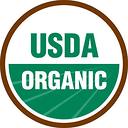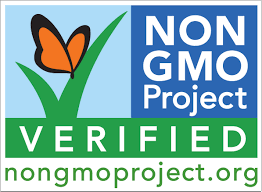By Stephen T. Sinatra, M.D., F.A.C.C., F.A.C.N., C.N.S., C.B.T.
If you’ve swilled a soda, or eaten tacos, corn, breakfast cereal, soy foods, or margarine, odds are that you’ve eaten genetically modified food, commonly referred to as GMO (for “genetically modified organism”). While inadvertently consuming them is easy, the possible health risks of GMOs are much harder to swallow.
GMO Crops Dominate Our Food Supply
Genetically modified food is everywhere. The Grocery Manufacturer’s Association has estimated that approximately 70 to 80 percent of processed food in supermarkets – from soups to condiments to crackers – contains GMO ingredients. In the U.S., up to 94 percent of soybeans, and up to 92 percent of corn, grown are GMO. Upwards of 95 percent of sugar beets may now be GMO, and 88 percent of cotton is as well (food products often contain cottonseed oil). Even super-healthy foods such as Hawaiian-grown papayas and some varieties of zucchini and summer squash harbor GMOs. Canola is now a GMO crop. Additionally, many GMO crops are used as animal feed for agricultural animals raised for meat, which we then eat. The increasing presence of GMOs in crops and food has prompted the question, “are GMOs safe?”
What are GMOs? In genetic engineering, the genes and DNA-the building blocks of certain organisms are extracted and artificially inserted into the genes of another organism in hopes of increasing yield or resistance to disease or delaying ripening for a longer shelf life. Genes from bacteria, viruses, and animals been spliced into plants like soybeans, corn, canola, cotton and rice.
Are GMOs safe? Not in my opinion, and here’s why:
Health Risks of GMOs
1. GMOs may introduce food allergens into the food chain.
Let me give you an example: About 15 years ago, an American manufacturer created a genetically modified type of maize, a type of corn fed to farm animals. The maize was genetically altered to contain a pesticide that would repel insects. Well, somehow that maize found its way into the human food supply, mainly tacos, and there were widespread reports of food allergies in the form of headaches, diarrhea, nausea, and vomiting. Over the years, this same scenario has continued to play out, again and again, in many other genetically modified foods.
2. GMOs may increase our intake of vicious toxins.
Let’s face it, we already live in a sea of chemicals, from the water we drink to the personal care products we smear on our bodies to heavy metal contamination to the polluted indoor and outdoor air we breathe. Now it turns out that when we consume GMO foods, there’s the risk that their gene-shuffled ingredients may get in our cells and tissues, increasing bodily toxicity that may promote cancer.
The best example of this has to do with milk from cows that have been injected with recombinant Bovine Growth Hormone (rGBH), a GMO product which increases milk production. As I mention in GMO (Genetically Modified) Foods, Milk from rGBH-treated cows contains high levels of a natural growth factor (IGF-1), which is linked to the development of breast, prostate and colon cancers.
Something else: One of the biggest concerns is that GMO crops are often engineered to withstand large doses of toxic herbicides. Not surprisingly, herbicide-resistant weeds have sprouted up like crazy and are found today on nearly 100 million acres in 36 states. To destroy these weeds, fields have to be sprayed with multiple herbicides, including one called 2 4-D, found in the highly poisonous Agent Orange used in the Viet Nam war. 2 4-D is now regarded as a “possible human carcinogen” by the International Agency for Research on Cancer (IARC).
Also, GMO crops are generally altered to withstand much heavier-than-normal pesticide application; by consuming them, we also consume pesticide residues. Pesticides have been linked to numerous health problems including blood, kidney and liver toxicity, birth defects, and even cancer. Children are particularly vulnerable to the toxic effects of pesticides.
3. GMOs may increase the risk of antibiotic resistance.
When genetic engineers artificially transfer a foreign protein into a food, they often link it to another gene, called an antibiotic-resistance marker gene. Why? The marker gene shows how well the plants are taking up other modified genes and whether the gene-splicing has been successful. While this might sound like cool science, public health officials and other experts are concerned that these marker genes may find their way into the gut bacteria of animals, making them, and those of us who eat them, resistant to treatment with antibiotics. This means we might not be able to cure serious and lethal infections such as E-coli or staph.
Are the Benefits of GMOs Worth the Risks?
Polish researchers exploring the benefits and risks associated with GMO foods tell us that, “genetic modification of plants are justified by the potential for improvement of the food situation worldwide, an increase in yield crops, an increase in the nutritional value of food, and the development of pharmaceutical preparations of proven clinical significance.” In the same review article, the researchers explain in scientific detail the risks I mention above, and note that “the relationships of [GMO] food effects on human body are being investigated by conducting numerous tests on animals.” Recognizing the lack of evidence demonstrating that GMO foods are safe for human consumption, the researchers concluded, “consumers themselves must decide whether to consume [GMO] food, which should be appropriately labeled and supplied with reliable information on the conducted modifications.”
What should you take from this? Unless you want to be a guinea pig with a potentially bleak future health status, I would avoid eating GMO foods as much as possible.
How to Avoid GMO Foods
Sadly, the cultivation of GMO crops is expanding globally, and ingredients derived from GMOs are now almost everywhere in our food supply. On the upside though, you can protect yourself from the potential health risks of GMOs. The quickest, easiest way to do so is to buy organic foods. They have not been sprayed with pesticides or treated with herbicides. Nor have they been tinkered with genetically. And organic livestock aren’t allowed to be fed genetically modified grains, nor can they be given GMO growth hormones.
For you label-readers out there (this should be all of us!): Although there is no government-mandated labeling of GMO foods yet, you can still look for foods with the following USDA Organic and Non- GMO Project Verified seals.
Also, when you pluck fruit or vegetables from the produce bin, check the PLU label stuck to the produce. Avoid any five-digit PLUs that begins with the number 8, which indicates that the item is a GMO food. Organic, non-GMO produce will have a five-digit number beginning with a 9.
Buying fruits and veggies at a farmer’s market is a good idea too. But ask the farmers if they plant GMO seeds, to be on the safe side.
Finally, if you want to steer clear of GMOs, tell your lawmakers that you want to know if there’s GMOs in the food you’re buying!
Other Organizations:
- Organic Consumers Association
- Environmental Working Group
- Alliance for Natural Health – USA
- Center for Food Safety
References:
- The Facts About GMOs. Grocery Manufacturers Association Position on Gmos.
- Kramkowska M, Grzelak T, and Czyzewska K. Benefits and risks associated with genetically modified food products. Annals of Agricultural and Environmental Medicine. 2013;20(3):413-419.
- Center for Food Safety (CFS). “Genetically Engineered Crops,” “About GE Foods,” and “Crops in the Pipeline.”Centerforfoodsafety.org.
© 2016 HeartMD Institute. All rights reserved.













